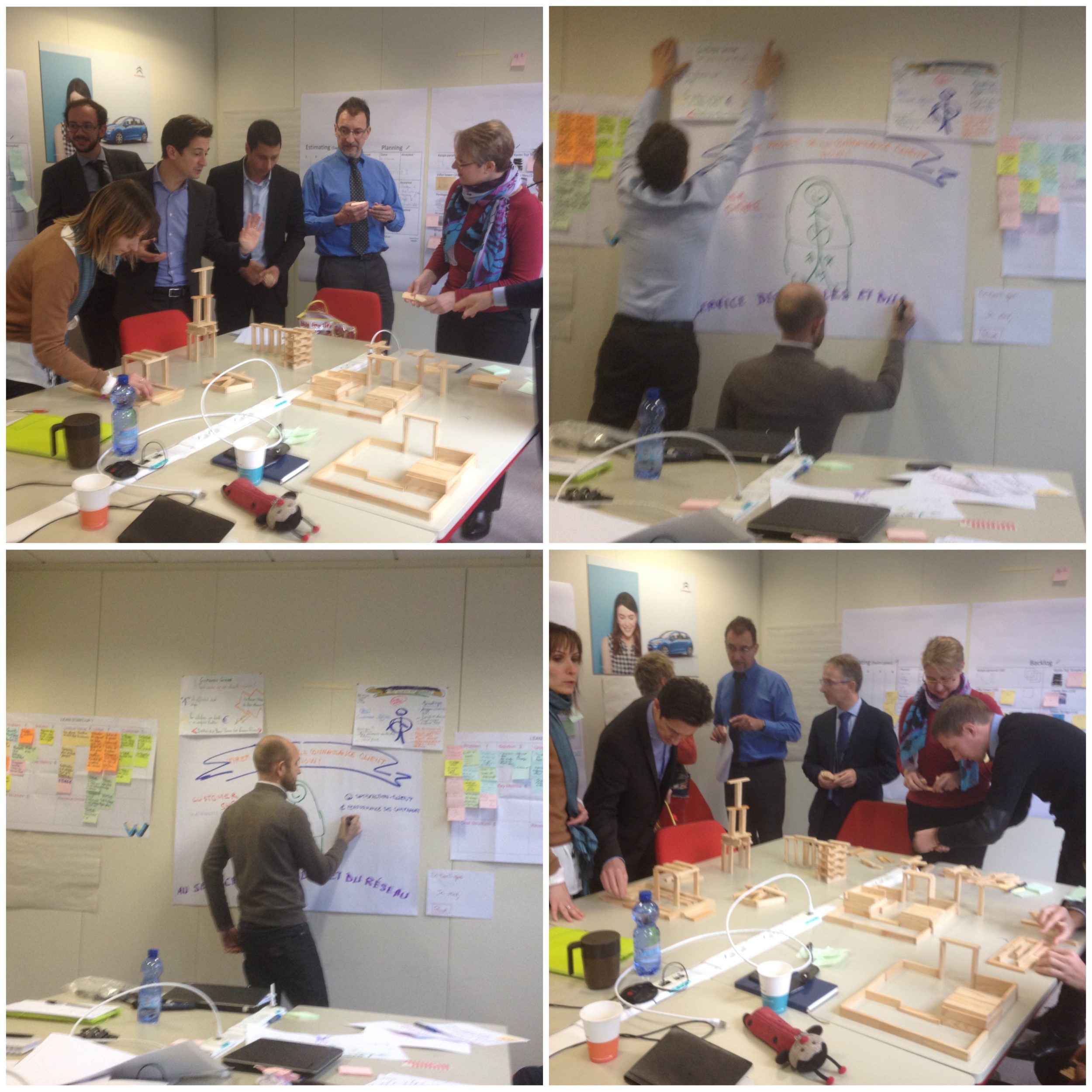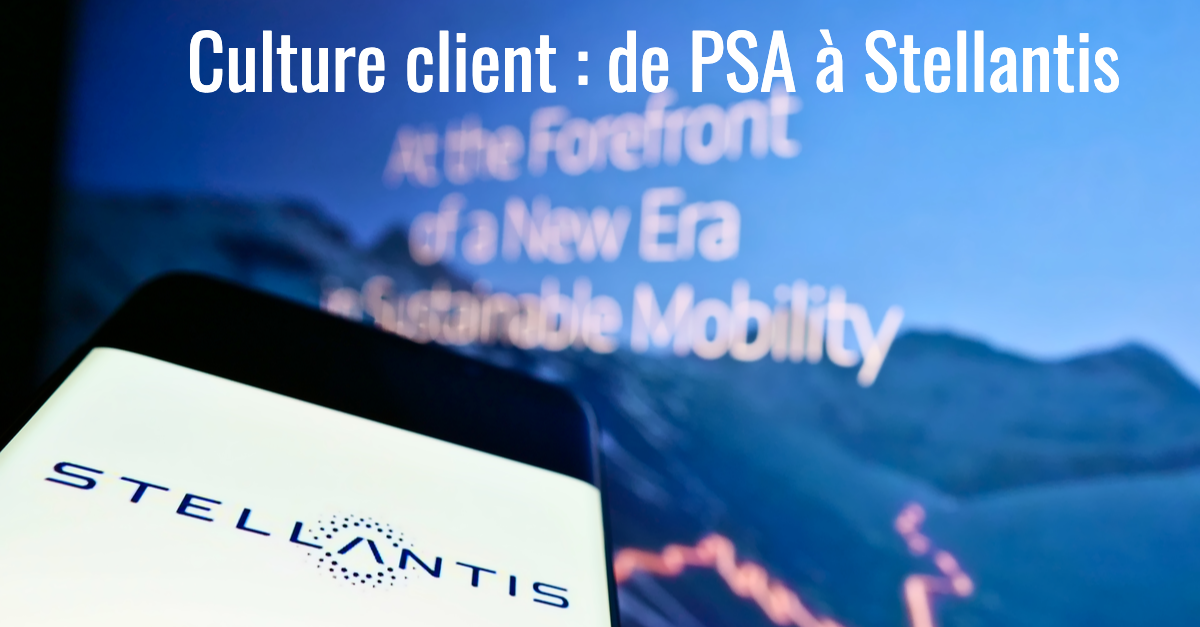The integration of customer voice played a pivotal role in establishing a strong e-reputation for PSA, now an integral part of Stellantis, the world’s leading automotive manufacturer.
As a butterfly coach, I had the privilege of being involved in the company’s digital transformation for 7 months. In this journey, agility transcended being a mere trend; it became an opportunity to transform and reevaluate the brand’s relationship with its customers.
The company refocused on its expertise, placing the customer at the core of its DNA. Production chains evolved into service providers, completely integrating the customer culture into all brand concessions. This was made possible through a strategic market segmentation, enabling the identification and personalized targeting of customer profiles.
A significant project, named “eDealer,” was implemented to establish direct contact with the dealers, considering them as customers of the brand. This approach led to improved stock management, optimized promotional offers, and the identification of synergies between brands. PSA became a provider of innovative mobility solutions, driven by a customer-centric approach that inspired the entire company.
The initial steps towards this transformation required a shared understanding of customer segmentation, a Lean Canvas for experimenting with new products, Agile governance, and an Agile-modeled Business Plan. Over time, the automotive manufacturer succeeded in streamlining the customer journey at its points of sale, resulting in an improved quality of customer service.
The centralization of transformation projects enabled competition among different concessions, all following an identical customer journey. Customers were given the opportunity to express their satisfaction levels, contributing to the construction of a positive reputation.
The implementation of the Inside Board platform allowed tracking customer satisfaction progress across the entire group, fostering friendly competition among teams and enhancing employee engagement in the transformation process.
Through this customer-focused and agile approach, PSA, now Stellantis, has emerged as a global leader in the automotive industry while maintaining its position as a pioneer in multi-channel digital transformation. This success story highlights the power of integrating customer voice in creating a robust and enduring e-reputation.
Far from being a passing trend, Agile was an opportunity for the company to transform itself and challenge its brand perception among customers. The company remains centered on its expertise, with technology serving processes and business-driven operations.
Over time, the production chains have gradually shifted focus towards the customer, transforming the company’s DNA from a mere manufacturer to a service provider. The customer culture is now fully integrated, and the customer journey has been enhanced across all Stellantis concessions.
This article reflects on the emerging projects I had the privilege of supporting at the time, which are now fully mature and operational. It is a flashback from 2016 to 2021.
Identify the target profil
Customer Segmentation Market segmentation allows us to identify the target profile of consumer-customers. The market is organized into sub-segments, with each product targeted towards a specific type of customer.
Strategic segmentation enables the targeting of consumers potentially interested in the product and positioning on these specific markets. Therefore, understanding the target audience is crucial. Claiming to be customer-centric only makes sense when the target audience is identified.
In the projects I supported at PSA, this approach was essential because the primary customer in mind was the driver of the car. While they are the final recipient, at the inception of the Customer Culture project, reaching this target was not feasible. The driver is a customer of the dealership representing the brand.
eDealer project
The dealer is seen as a customer of the brand.
By communicating with the dealers, PSA comes into direct contact with the after-sales service. Thus, the website breaks the tradition of the informative site by offering its dealers a real e-commerce site..
Therefore, the promotional offers are made on the products chosen by the various dealers themselves, just like the type of operation implemented! The objective is thus to better manage the rotation and aging of stocks, while identifying synergies between the brands.
The Peugeot brand, followed by Citroën, are the precursors of a major change in strategy: to be a supplier of innovative mobility solutions and services. PSA has therefore focused all its efforts on its customers, whether they are partners, suppliers, distributors, dealers, or internal customers? It has succeeded in anchoring an inspiring customer culture approach.
Customer share
Our first steps were to understand the agile approach, to align with our expectations in terms of CRM, and to determine who our customers were:
- The project is Centric organization and the clients are the PSA Brands.

Our first deliveries:
- A common understanding of customer segmentation
- A Lean Canvas with a first product to experiment with
- A vision shared on the front page of a magazine
- A RACI of people nested in the project
- A list of decisions to make
The Business Plan is written in Agile mode (Lean Start up) and the first user stories feed into the strategic backlog. A few months later, the car manufacturer succeeded in streamlining this customer journey in its points of sale and improving the quality of reception on arrival.
Agile governance is also in place to monitor all of the group’s transformation projects and ensure a minimum budget for these experiments.
Rationalization of IS tools
In order to follow the progression of customer satisfaction in the same way throughout the group, PSA has opted for a transformation project management tool: Inside Board, which is deployed for all of the group’s brands.
The platform makes it possible to monitor employee engagement in the transformation by measuring and sharing individual and collective results. and by promoting friendly competition between teams by gamifying the learning process.
Customer service quality improvement programs, consumer journeys, and collaboration between dealers are grouped together and connected to the same platform.
Scheduling appointments allows you to ensure quality customer service and manage staff in order to guarantee the quality of customer reception.
The centralization of transformation projects also allows the various concessions to compete with each other thanks to identical monitoring of the customer journey. The indicators from one concession to another are identical, the definition of the route is the same.
Customers can also express their level of satisfaction and recommend a particular dealership, just like they would a restaurant on Trip ….
PSA with Stellantis continues its integration of the “customer journey”. With the regrouping of 14 brands, it becomes the world’s leading automotive producer and maintains its position as a pioneer in terms of multi-channel digital business.
Experience Report: From Data Collection to Multi-Channel Integration
As the Squad Voices, our team was established as part of our strategy to listen to and integrate the voice of the customer in an agile environment. Our mission is to collect, analyze, and integrate customer feedback and complaints to continuously improve their experience.
The first step of our journey was to set up diverse collection channels to interact with our customers. We implemented online surveys, dedicated inboxes, interactive chatbots on our website, and engaged actively on social media to encourage customers to share their feedback. This diversification allowed us to reach a wide range of customers, gathering valuable insights into their needs, preferences, and frustrations.
Once the data was collected, our team engaged in thorough analysis. Using advanced analytics tools, we extracted relevant insights and customer satisfaction indicators. We identified trends, recurring issues, and improvement opportunities. This analysis phase empowered us to make informed decisions regarding actions to address our customers’ expectations.
Agile integration of feedback was a challenge, but our team swiftly rose to meet it. We established a transparent communication channel with relevant stakeholders, including operational teams and multi-channel integrators. Through regular meetings and seamless exchanges, we rapidly incorporated feedback into customer processes and journeys. This agility enabled us to implement continuous improvements and respond quickly to evolving customer needs.
Collaboration across functions was at the heart of our success. By closely working with other teams in the company, we raised awareness of the importance of the customer’s voice and integrated it into decision-making at all levels. This synergy strengthened our impact and fostered a customer-centric culture within the organization.
Continuous training was a vital aspect of our journey. We ensured our team remained informed about best practices in customer feedback management. This allowed us to stay at the forefront of new trends and continuously enhance our listening and integration processes.
Today, our team continues to play a pivotal role in multi-channel integration. Thanks to our customer-centric approach, we have succeeded in improving the overall customer experience and enhancing our reputation as a company dedicated to listening and customer satisfaction.
We take pride in contributing to the success of our organization and remain committed to pursuing excellence in our mission of listening to and integrating the voice of the customer.

